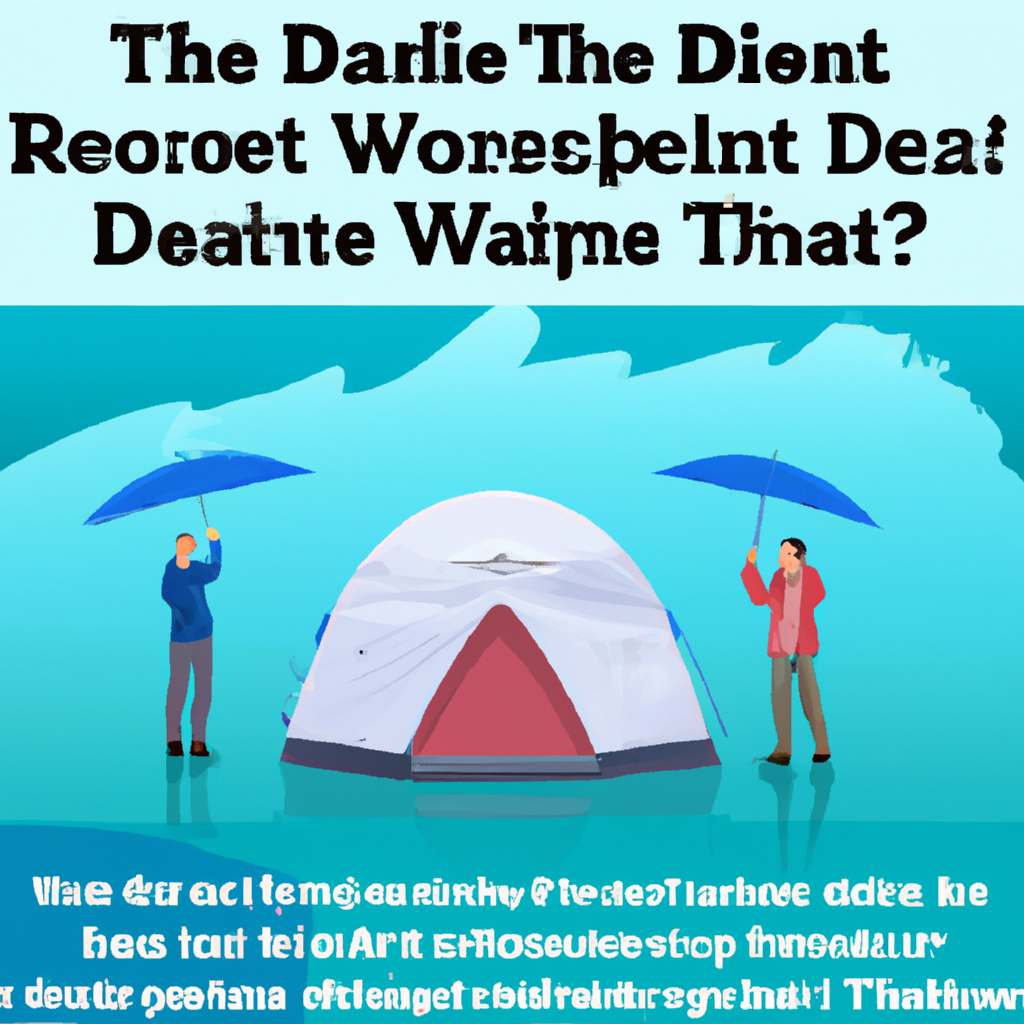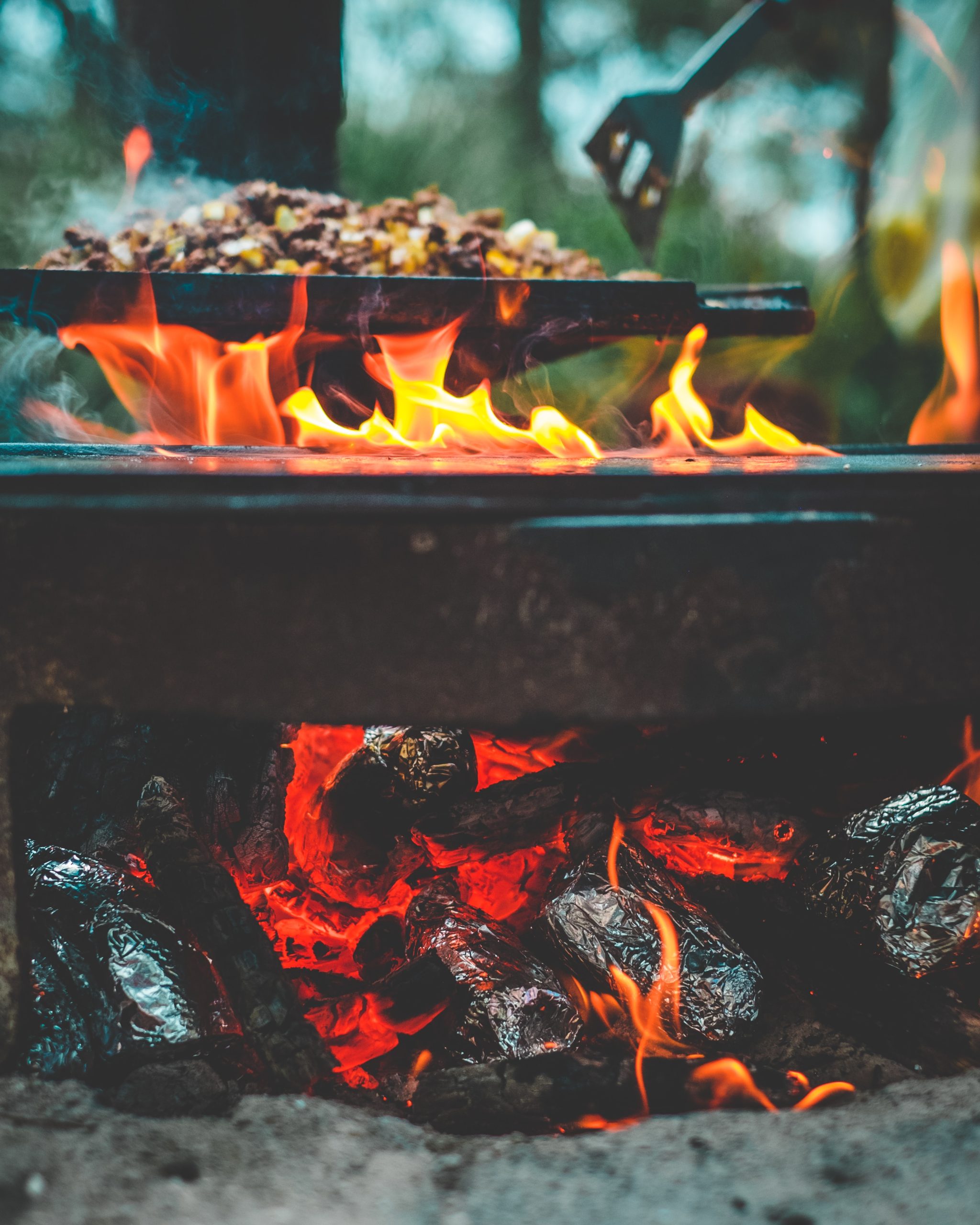Imagine a camping trip in the heart of nature, with nothing but the sound of the rustling leaves and the distant hoot of an owl to keep you company. As you settle into your cozy tent for a peaceful night’s sleep, you may find yourself wondering: should tents be waterproof? In this article, we will explore the importance of ensuring your tent protects you from the elements, the benefits of a waterproof tent, and how it can enhance your outdoor adventures. So sit back, relax, and let’s take a closer look at whether waterproof tents are a must-have for all camping enthusiasts.

Importance of Waterproof Tents
Whether you’re an avid outdoor enthusiast or a casual camper, having a waterproof tent is crucial to ensure a comfortable and enjoyable camping experience. A waterproof tent provides protection from rain and moisture, prevents the growth of mold and mildew, maintains comfort, and enhances durability. Let’s dive deeper into each of these benefits to understand why waterproof tents are a must-have for any camping trip.
Protection from Rain and Moisture
One of the primary reasons why you need a waterproof tent is to protect yourself from rain and moisture. A waterproof tent is designed to keep you dry during unexpected rain showers or heavy downpours. Imagine waking up to a soaking wet sleeping bag or finding your electronic devices ruined by water leakage. With a waterproof tent, you can sleep peacefully knowing that you are shielded from the elements outside.
Prevention of Mold and Mildew
Another advantage of having a waterproof tent is preventing the growth of mold and mildew. When moisture seeps into a non-waterproof tent, it creates a perfect breeding ground for these unwelcome intruders. Not only can mold and mildew cause unpleasant odors, but they can also trigger allergies and respiratory problems. A waterproof tent acts as a barrier to prevent moisture from entering and ensures a clean and healthy camping environment.
Maintaining Comfort
Staying comfortable while camping is essential for an enjoyable experience, and a waterproof tent plays a crucial role in achieving that. By keeping the rain out, a waterproof tent helps maintain a dry interior, keeping your sleeping bag, clothes, and other gear free from moisture. Being dry means staying warm during chilly nights and avoiding the discomfort of damp sleeping conditions. With a waterproof tent, you can rest assured that your camping adventure will be a cozy and pleasant one.
Enhanced Durability
Investing in a waterproof tent also means investing in durability. A waterproof tent is typically made with high-quality materials that are designed to withstand the harsh outdoor elements. From heavy rain to strong winds, a waterproof tent holds up well, providing you with a reliable shelter that will last for many camping trips to come. The enhanced durability of a waterproof tent ensures that you get the most value out of your investment, making it a smart choice for any camping enthusiast.
Different Levels of Waterproofing
Not all tents offer the same level of waterproofing, so it’s important to understand the different options available. Here are three levels of waterproofing commonly found in tents:
Water Resistant
A water-resistant tent provides some level of protection against light rain or drizzle. While it may repel water to an extent, it is not designed to withstand heavy rainfall or prolonged exposure to moisture. Water-resistant tents are suitable for camping in fair weather conditions, but they may not be reliable during more challenging weather scenarios.
Waterproof
A waterproof tent is designed to keep you dry even in heavy rain and wet conditions. It is constructed with materials that have a higher level of water resistance, and often includes innovative features such as sealed seams and waterproof zippers. A waterproof tent is your best bet when camping in areas with unpredictable weather or during seasons prone to rain.
Ultralight Waterproofing
For the more adventurous campers who prioritize weight and compactness, ultralight waterproofing is a popular choice. These tents are designed to be lightweight and highly packable, making them ideal for backpacking and long-distance hiking trips. Ultralight waterproof tents strike a balance between durability and weight, ensuring you can stay dry without sacrificing mobility.
Factors to Consider
When choosing a waterproof tent, there are several factors to consider to ensure you make the right decision for your needs. Let’s explore these factors in more detail:
Material Selection
The material used in the construction of a tent plays a significant role in its waterproofing capabilities. Look for tents made with high-quality, waterproof materials such as nylon or polyester. These materials are often coated with a waterproof treatment to enhance their water resistance. Additionally, consider the denier rating of the fabric, as a higher denier indicates a thicker and more durable material.
Seam Sealing
Seams are one of the most vulnerable areas for water penetration in a tent. To prevent this, many tents come with sealed seams, where the stitching is covered with a waterproof tape or liquid sealant. Seam sealing is a critical feature to look for in a waterproof tent, as it ensures that water won’t seep through the seams and compromise your shelter’s integrity.
Quality of Zippers and Closures
Another factor to consider is the quality of zippers and closures used on the tent. Look for tents with high-quality, waterproof zippers that glide smoothly and securely close the tent openings. Additionally, check if the tent has storm flaps or rain flys that provide an extra layer of protection against water intrusion.
Design and Construction
The design and construction of a tent can greatly impact its waterproofing capabilities. Look for features such as a bathtub floor design, where the tent floor curves up the sides to create a waterproof base. A rain fly over the tent body can provide additional protection against rain and help divert water away from the tent walls. Pay attention to the tent’s ventilation as well, as proper airflow can help reduce condensation buildup.
Tent Weight and Packability
Consider the weight and packability of a waterproof tent, especially if you plan on doing long hikes or backpacking trips. Ultralight waterproof tents are designed to be lightweight and compact, making them easy to carry and fit into a backpack. However, keep in mind that ultralight tents may sacrifice some durability compared to heavier options.
Waterproofing Techniques
Tent manufacturers employ various techniques to enhance the waterproofing capabilities of their products. Here are three common waterproofing techniques:
Coating and Durable Water Repellent (DWR) Treatment
Many tents undergo a coating process where they are treated with a special waterproof coating or a Durable Water Repellent (DWR) treatment. This treatment creates a protective barrier that causes water to bead up and roll off the tent fabric, rather than being absorbed. Coatings and DWR treatments need to be periodically reapplied to maintain their effectiveness.
Welded Seams
Welded seams are created by using specialized machines to bond the tent fabric together, creating a waterproof seal. Instead of stitches, welded seams use heat or glue to join the fabric panels, preventing water from seeping through the stitching holes. Welded seams are highly effective at keeping water out and are often found in high-end waterproof tents.
Taped Seams
Taped seams involve applying a waterproof tape to the seams of the tent. This tape acts as an additional barrier, sealing the tiny holes made by the stitching and preventing water from infiltrating the tent. Taped seams are a popular choice for waterproof tents and provide reliable waterproofing performance.

Cost and Trade-offs
When considering waterproof tents, it’s important to understand the cost and trade-offs associated with different waterproofing options. Here are some factors to keep in mind:
Waterproofing Cost
Higher levels of waterproofing typically come at a higher cost. Ultralight waterproof tents and those with advanced waterproofing technologies often require more expensive materials and manufacturing processes, which can drive up the price. It’s essential to consider your budget and camping needs to strike a balance between waterproofness and affordability.
Breathability vs. Waterproofness
There is a trade-off between breathability and waterproofness when it comes to tents. Waterproof materials often compromise breathability, making it harder for moisture and condensation to escape from the tent’s interior. While it’s important to have a waterproof tent, it’s equally crucial to ensure proper ventilation to minimize condensation buildup. Look for tents that offer a balance between breathability and waterproofness, especially for camping in more humid conditions.
Weight and Packability vs. Waterproofness
Ultralight waterproof tents are designed to minimize weight and volume, making them ideal for backpackers and hikers. However, sacrificing weight and packability can sometimes mean compromising on the level of waterproofing. It’s important to strike a balance between the weight and packability of the tent and its ability to keep you dry. Consider the expected weather conditions and the length of your camping trip when making this trade-off.
Alternative Approaches to Waterproofing
While a waterproof tent is the most direct solution to tackle rain and moisture, there are alternative approaches that can provide additional protection. Here are three alternative measures to consider:
Use of Groundsheets or Tarps
Using a groundsheet or tarp underneath your tent can provide an extra layer of protection against ground moisture. Groundsheets act as a barrier, preventing water from seeping through the tent floor. Combined with a waterproof tent, a groundsheet provides added confidence in keeping your camping setup dry even in wet terrains.
Campsite Selection
Choosing the right campsite can play a significant role in preventing water intrusion into your tent. Look for areas on higher ground that are less likely to accumulate water during rainfall. Avoid setting up your tent in depressions or areas prone to flooding. Additionally, position your tent in a way that allows water to naturally flow away from it, such as placing the tent’s entrance slightly higher than the rest of the tent.
Additional Protective Measures
Consider bringing additional protective measures to further enhance your tent’s waterproofing. Silicone sealants can be used to seal potential areas of water leakage, such as around zippers or seams. Waterproof sprays can also be applied to the exterior of the tent for extra water resistance. These additional measures can provide peace of mind and an added layer of protection during heavy downpours.
Maintenance and Care
To ensure the longevity of your waterproof tent and its continued effectiveness, proper maintenance and care are crucial. Here are some key aspects to consider:
Regular Cleaning and Drying
After each camping trip, make sure to clean and dry your tent thoroughly before packing it away. This helps prevent the growth of mold and mildew and ensures that the tent’s waterproofing properties remain intact. Use mild soap and water to clean the tent, and avoid using abrasive cleaning agents that can damage the waterproof coating.
Repairing Damage
Promptly address any damage or wear and tear on your tent to maintain its waterproof capabilities. Repair small tears or holes with a waterproof patch kit, which can be purchased at outdoor gear stores. Keep an eye out for any signs of seam separation or degradation, and seek professional repairs or replacement if necessary.
Storage Considerations
When not in use, store your tent in a cool, dry place to avoid unnecessary exposure to moisture. Avoid keeping the tent compressed for long periods, as this can lead to damage or loss of waterproofing. Store the tent loosely in its bag or hang it up to allow for air circulation, which helps prevent the growth of mold and mildew.
Common Misconceptions
There are several misconceptions surrounding tent waterproofing that are important to address. Let’s debunk some of these misconceptions:
Waterproofness for All Conditions
While a waterproof tent offers excellent protection against rain and moisture, it’s important to note that no tent is completely impervious to all conditions. Extremely heavy downpours, prolonged exposure to rain, or submerging the tent in water are scenarios where even the most waterproof tents may face challenges. It’s essential to understand the intended use and limitations of your tent to ensure proper preparation for varying weather conditions.
Longevity of Waterproofing
Over time, the waterproofing properties of a tent may degrade due to wear and tear, exposure to UV rays, or repeated folding and storage. Despite high-quality materials and proper maintenance, waterproofing effectiveness can diminish over the years. It’s a good practice to periodically test your tent’s waterproofing by spraying water on it or setting it up in your backyard during a light rain to check for any signs of leakage.
Leakage and Condensation
Leakage and condensation can sometimes be misidentified as flaws in a tent’s waterproofing. Leakage can occur if the tent is not set up properly, if the rain fly is not secured tightly, or if the tent is subjected to intense water pressure. Condensation, on the other hand, happens when warm, humid air inside the tent comes into contact with cooler tent surfaces, resulting in droplets forming inside the tent. Proper ventilation and campsite selection can help minimize condensation and ensure a comfortable camping experience.

New Developments in Tent Waterproofing
As technology advances, so does the innovation in tent waterproofing. Manufacturers are constantly striving to improve the waterproofing capabilities of their tents with new developments. Here are a few exciting advancements:
Innovative Materials
New types of fabric are being developed specifically for tents, combining lightweight properties with enhanced waterproofing. These fabrics often incorporate advanced coatings or treatments that repel water while maintaining breathability. Additionally, materials with integrated UV protection help prolong the lifespan of the tent and prevent degradation due to sun exposure.
Smart Fabrics
Smart fabrics are revolutionizing the world of outdoor gear, including tents. These fabrics have intelligent properties that respond to changing environmental conditions. For example, some smart fabrics automatically adjust their porosity to allow for better breathability during periods of high humidity while remaining waterproof. These advancements in smart fabrics offer improved comfort and adaptability in various weather conditions.
Advanced Seam Sealing Technologies
Seam sealing technologies are constantly evolving to provide stronger and more reliable waterproofing. Manufacturers are experimenting with new methods and materials to ensure an airtight seal. This includes advanced tape formulations and improved bonding techniques, resulting in more durable and long-lasting waterproof seams.
Conclusion
When it comes to camping, having a waterproof tent is of utmost importance. From protecting you against rain and moisture to ensuring a comfortable and durable shelter, the benefits of owning a waterproof tent are undeniable. By considering factors such as material selection, seam sealing, zippers and closures, design and construction, tent weight, and packability, you can find the perfect waterproof tent that suits your needs. Remember to also take into account the cost and trade-offs associated with different levels of waterproofing. As you explore alternative approaches to waterproofing, practice proper maintenance and consider the common misconceptions to prolong the life of your waterproof tent. Stay informed about the latest advancements in tent waterproofing and find the right balance by considering the climate and intended use of your camping adventures. With a reliable waterproof tent by your side, you can confidently embrace the great outdoors, rain or shine.






